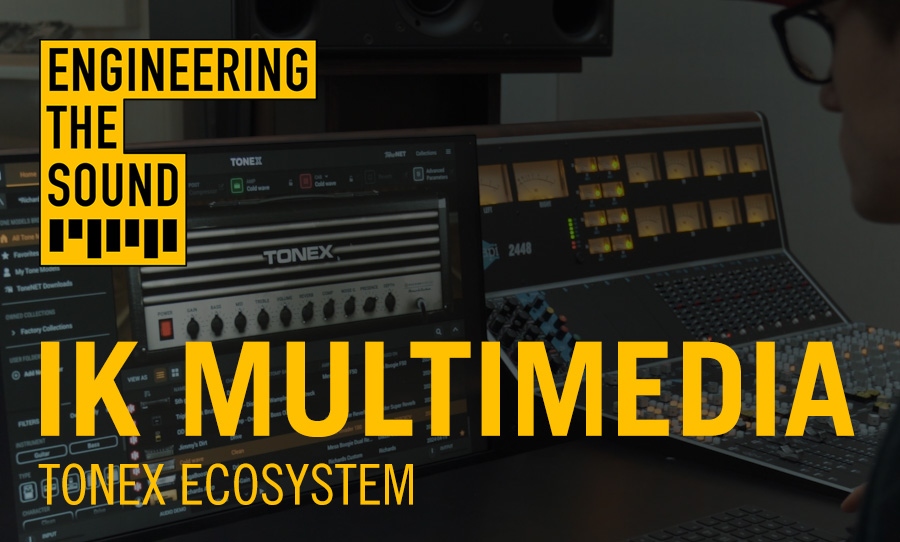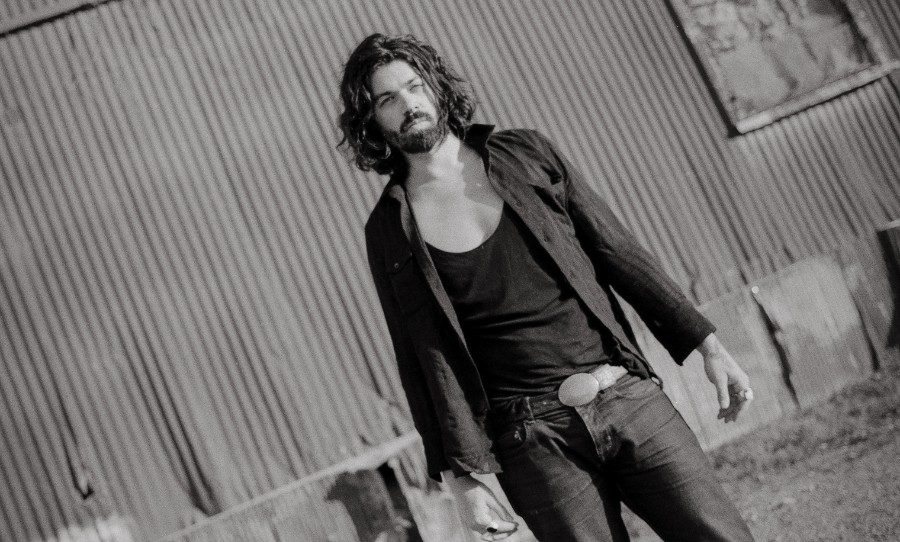Since the release of their highly acclaimed album SOLACE in 2018, Aussie electronic trio RÜFÜS DU SOL have resurfaced, yielding their brand new album, SURRENDER.
The fourth studio album from RÜFÜS DU SOL sees the band experimenting with a subtle plethora of unique sounds. From edgier club tracks like On My Knees to gospel-tinged gems like Make It Happen and Surrender, the band has pushed boundaries whilst maintaining their signature sound.
Keyboardist Jon George spoke to Happy about the intention behind the record and how it facilitated a moment of healing and reconnection for the trio, particularly during a wild and fragmented time. SURRENDER comes out tomorrow, October 22!
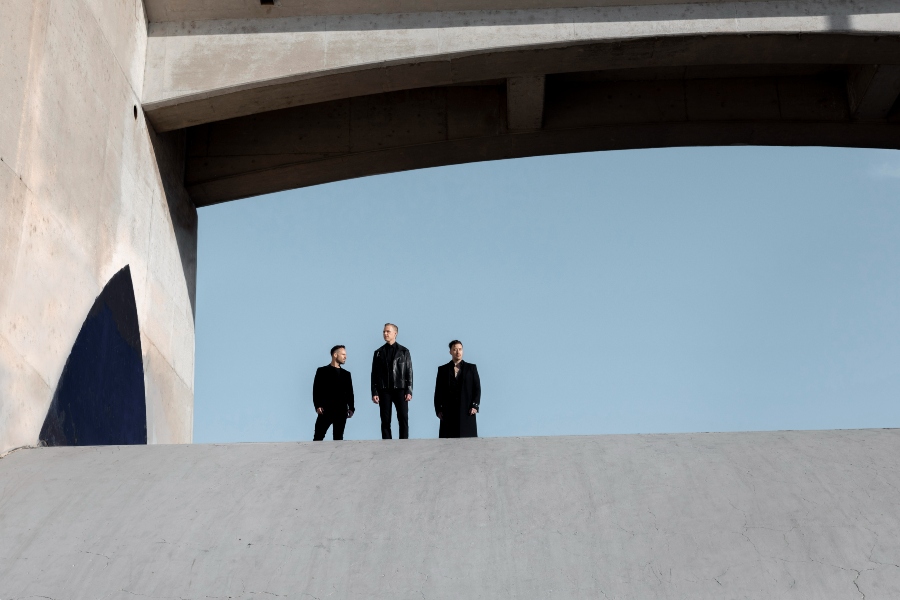
HAPPY: Hi, Jon.
JON: How are you doing?
HAPPY: Yeah, good, thanks. How are you?
JON: Really good. In New York at the moment, getting ready for the show tomorrow.
HAPPY: Very nice. Getting ready for tomorrow?
JON: Yeah, we’re going to be playing at Governors Ball Festival here or Gov Ball Festival here, so it’s going to be fun.
HAPPY: How exciting. So, I wanted to talk about your latest release, On My Knees. It has a noticeably heavier, darker, and punchier sound than the other songs on your upcoming album. What drove this sonic direction?
JON: Well, we always are playing with light and shade and having those moments on the record and so this song in particular came out of a little techno jam we were having in the studio and envisioning something to play, with this type of energy for our future live shows. So we had a lot of fun making a harder dance beat in the studio and we referenced Radiohead… like there’s this little ode to Radiohead in the breakdown, and yeah, just sort of darker kind of a mood that we really enjoyed.
HAPPY: Yeah, there was something else about it that that really stood out. I guess I did notice, listening to this new album, I got a lot of Kraftwerk and Depeche Mode vibes through the industrial synths. In saying that, the synths in Surrender felt current but they also have an older quality to them. So I’m curious, are you intentionally nodding back to some of the earlier founders of electronic or industrial music in this latest album?
JON: Yeah, I mean, that’s a very fair observation. I think that we are always sort of drawn to those sounds and in particular, we let that sort of flourish on this record. We were doing a lot of experimenting with different types of drum programming, and we have a really good array of analog synthesizers. So with that, we try to warble them and give them this old quality and bring out the richness and textures of these beautiful synthesizers. We’ve been referenced before as nodding to that era of early electronica. So we’re not shy of leaning into that.
HAPPY: Yeah, it was very, very cool, and was it just the experimentation in the studio that led you to doing that? Or is it something that you feel like you’ve always liked to do?
JON: Yeah, I think the experimenting brought it out. We started the record writing process in Joshua Tree when the pandemic hit. We intended to go out for two weeks and L.A. was in lockdown, and we ended up staying up there for eight weeks as everything shut down even longer. So we had a lot of time to experiment, but we were starting each day meditating together in the desert, and then we’d start a gym session listening to all different types of records and we would play the whole album through. So we played like old Chemical Brothers, old Reich’s, old Milo, Moby. We really tried to dive into some people’s seminal records over the years and what made them so good. So I think all of that influenced the writing process.
HAPPY: That’s so cool that you had that time to get away from society as well. Being in that desert environment would have been surreal and beautiful to have that reprieve.
JON: Yeah, for sure.
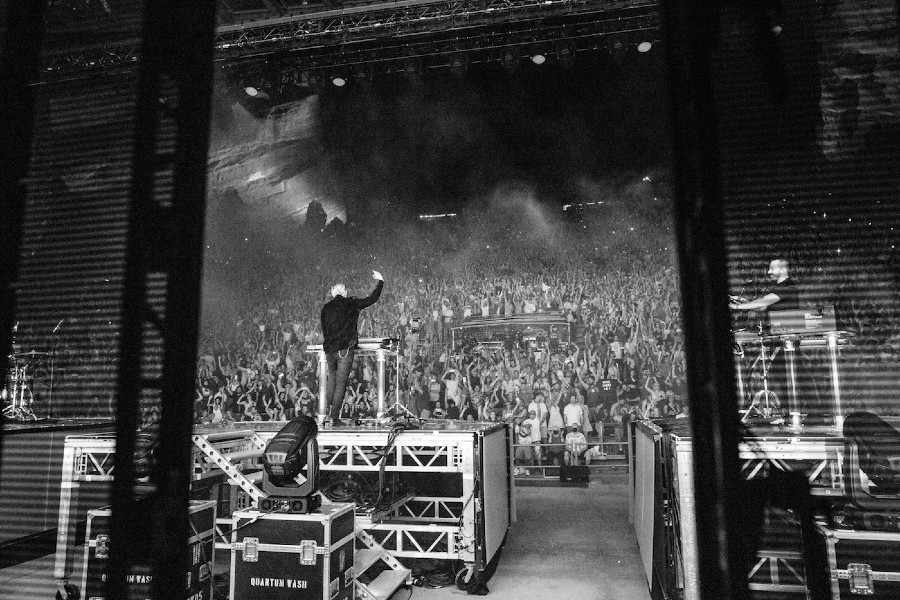
HAPPY: It’s interesting how all those things came in and you were surrounded by nature, but the sounds of the album are very industrial. It’s cool that was how things came together. I looked back on some things that you guys have said. James mentioned that when you guys were writing Next to Me, you kept trying to make it better by adding things to it but you found yourselves returning to its original sounds because it was at its purest and most authentic then. How prevalent was this approach when you were writing the other songs on Surrender?
JON: Yeah, we have a pretty extensive process of letting a track find itself and by that, I mean we tried several different ways for the track to work. We tried different types of beats and different types of production, and we layer, we layer, and we layer and then we can sometimes end up stripping everything back to its core. We usually sit with the track for, you know, a month after we think we’ve finished it just to make sure it feels as timeless as it did to us and that it’s found its true identity. So yeah, every song went through that process on the record – that’s why we’re so proud of it. But I think that every song has really been thought out and has lots of intention behind it.
HAPPY: Yeah, definitely. Even listening to Surrender, like when the choir came in. Oh, that was so different and it was really cool to see you guys branch out into those different kinds of sounds. Same with the choir that you had on Make it Happen, I think it was.
JON: Yeah, yeah, yeah, that’s right. Yeah, we have a children’s choir on Make it Happen and on Surrender. We were really trying to push ourselves on the record with those sorts of examples too and working with Curtis Harding, the vocalist you were talking about, to get that real soul gospel feeling into the record, particularly in that song. We’ve gone through some heavier moments and big emotive moments with I Don’t Want to Leave, Alive and Wildfire, and then there’s a moment of release and all that tension being built up, just letting go. I feel like that was a really special moment on the record and even the children on those two tracks (Make it Happen, Surrender) in the record, bringing some vulnerability and innocence amongst, you know, all of these different things that we’re exploring.
HAPPY: Yeah, it was cool having that contrast between the kids singing and those beats. When I heard it, I was like, ‘Is that actually like kids? Or have they sung it, then pitched their voices?’ I wasn’t sure, but…
JON: We actually did do that at the beginning when we were just getting the first demos and we would go in there and pretend to be children singing, and it sounded a little creepy. So we ended up getting the children properly. We actually had the children’s choir lined up ready to sing in Melbourne, and we were going to do it, you know, via Zoom link and get it all recorded properly in Melbourne, and then sent to us. But the day that we were going to record it, Melbourne went into lockdown and really the whole process got screwed up. So we ended up doing it here in L.A., over in America. So it was really nice to be a part of that process anyway, and see the children performing our song and knowing that in this environment.
HAPPY: Yeah, it works so nicely. I did notice that the image for your new album is really sleek and feels very refined compared to your previous look. The On Your Knees music video and press release photos also reflect this nicely. Did you adopt this new aesthetic to visually connect with your upcoming album?
JON: Yeah, we work with my brother who’s our creative director. His name’s Katzki, and he likes to pair what we’re creating in the studio with the visual element. He had shown us this place in Spain, I believe it’s called La Muralla Roja? It’s this beautiful building that has all these different coloured walls and it’s just really interesting architecture. You don’t even know if it’s digital or real, almost. So we wanted to play with that idea some more for our artworks, and we created the digital versions of this place. We often like to do that with digital versus analog or digital versus organic worlds. So we do that in our music and it’d be fitting to do that with our visuals and the same with the film clips, like playing… we used artificial intelligence to generate the trippy footage that you see in the Next to Me clip.
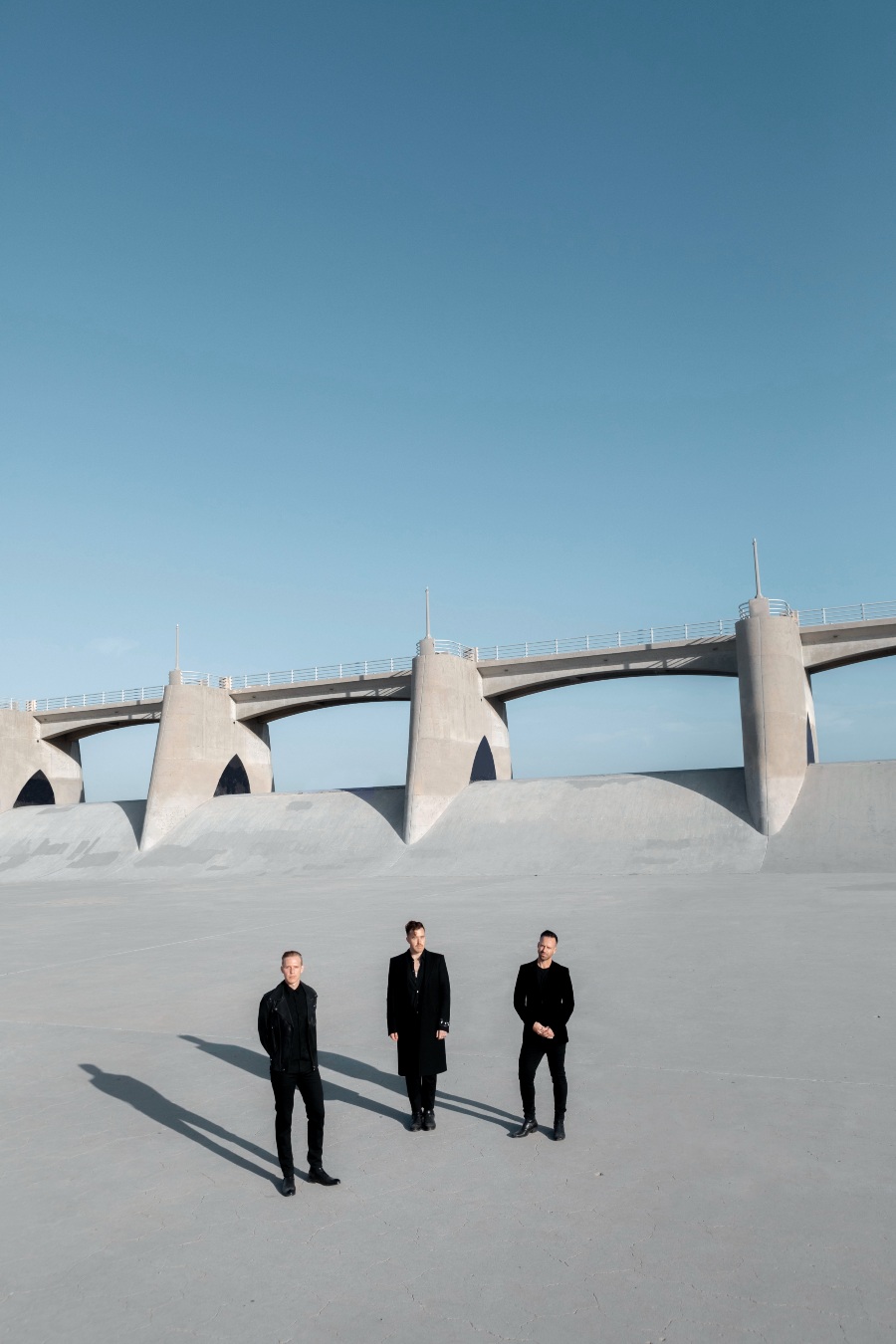
HAPPY: Yeah, I noticed that.
JON: Like working with a machine, collaborating with a machine was a pretty cool concept.
HAPPY: Those press release photos that you guys did, was that against an actual backdrop or was that computer generated?
JON: No, that’s the actual backdrop. I mean, you know, we were out in in the L.A. River… I forget what it’s called, but it’s these huge concrete structures that usually collect water in the middle of L.A.
HAPPY: Oh, sick. Or is that… that’s not where they filmed Grease is it?
JON: Yeah, that’s part of it. We were in a different section, but that’s the same thing.
HAPPY: Yeah, because I’m looking at pictures now and I’m like, ‘Wait a minute. I recognise this.’
JON: Yeah, exactly.
HAPPY: Very cool! I feel like albums aren’t just sonic experiences anymore, they’re very much visual experiences as well – it’s just another way for artists to express creativity. How important is imagery as a factor in portraying an album now?
JON: Yeah, like you said, I think that it is really important. It’s another way to add on to the experience and to sort of put someone in a different space mentally when listening to the music. So, you know, all the artwork we’ve been putting out recently with this record, it’s like you can almost travel to this spiritual building to go and listen to this record, and that seems like a pretty cool concept to us.
HAPPY: Yeah. I also like that there’s not really a clear indicator of where it’s taken or where the videos are shot. It’s as if it’s not necessarily about the place, it’s about where the music takes you. That sort of freedom with the visual lets the music do the talking.
So I have one more question. Today, we are more connected than ever digitally but disconnected and lonely because of social media, and COVID has heightened this. There seems to be themes of detachment, but also very strong yearning for connection throughout Surrender. Has this current situation shaped these themes?
JON: Yeah, I think that we… well, I guess one of the biggest things that happened with the pandemic, although it’s been a horrible thing for the world, we got a moment for ourselves to reconnect with the band and to press pause on all the touring and really hone in on ourselves and try to implement some different sort of practices to be better people to each other. The idea was to become better in the studio or better musicians, and that’s sort of what we focused on doing. We ended up really reconnecting as a band and as friends and created a safe place to write the music, be vulnerable and play in the studio as much as we wanted. I feel like this record was like a real moment of healing for us, amongst all the wildness of the world. And although we couldn’t see our family back in Australia, we were able to sort of embrace the process that we were undergoing and connect with each other.
HAPPY: Yeah, and I think that definitely comes through 100 percent, especially with those experimentations with the different sounds on the album as well. You can definitely hear that.
JON: Thank you so much.
HAPPY: No thank you for making an awesome album! It was really nice to listen to and I feel lucky to have actually gotten to listen to it before everyone else! *laughs*
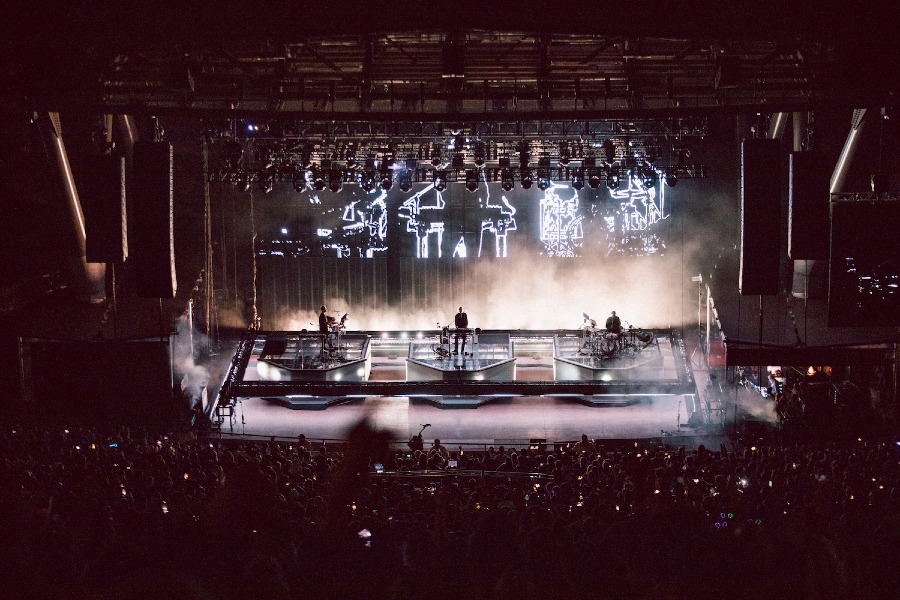
JON: *laughs* Yeah, but thank you so much. That’s so nice of you.
HAPPY: Yeah, of course. Were there any other questions that I haven’t asked that you’d like to bring up or?
JON: No, I think that last question really helped just paint the story of what’s been happening for us. I feel like that’s really good.
HAPPY: Awesome, perfect. Well, thank you so much for your time. Good luck with the performance tomorrow and yeah, I can’t wait for everyone to hear the actual full album. It’s going to be sick!
JON: *laughs* Thanks. Thank you so much for your time.
HAPPY: Thank you. See you later! Nice to meet you and talk to you.
JON: Yeah, thank you, bye.
HAPPY: Bye.
Surrender will be available from October 22!
Interview by Alex Stefanovic.
Press photos by Eliot Lee Hazel
Live at Red Rocks photos by @donslens

